The New Frontier in Healthcare: Personalization Meets Prevention
The integration of advanced technologies like artificial intelligence, genomics, wearables, and telemedicine is revolutionizing preventive healthcare. Moving beyond traditional reactive models, these innovations facilitate personalized prevention strategies, enabling earlier detection and more effective management of chronic diseases. This article explores how technology is shaping personalized preventive care programs to improve outcomes, reduce costs, and empower patients.
Digital Health Technologies: Foundations of Personalized Prevention
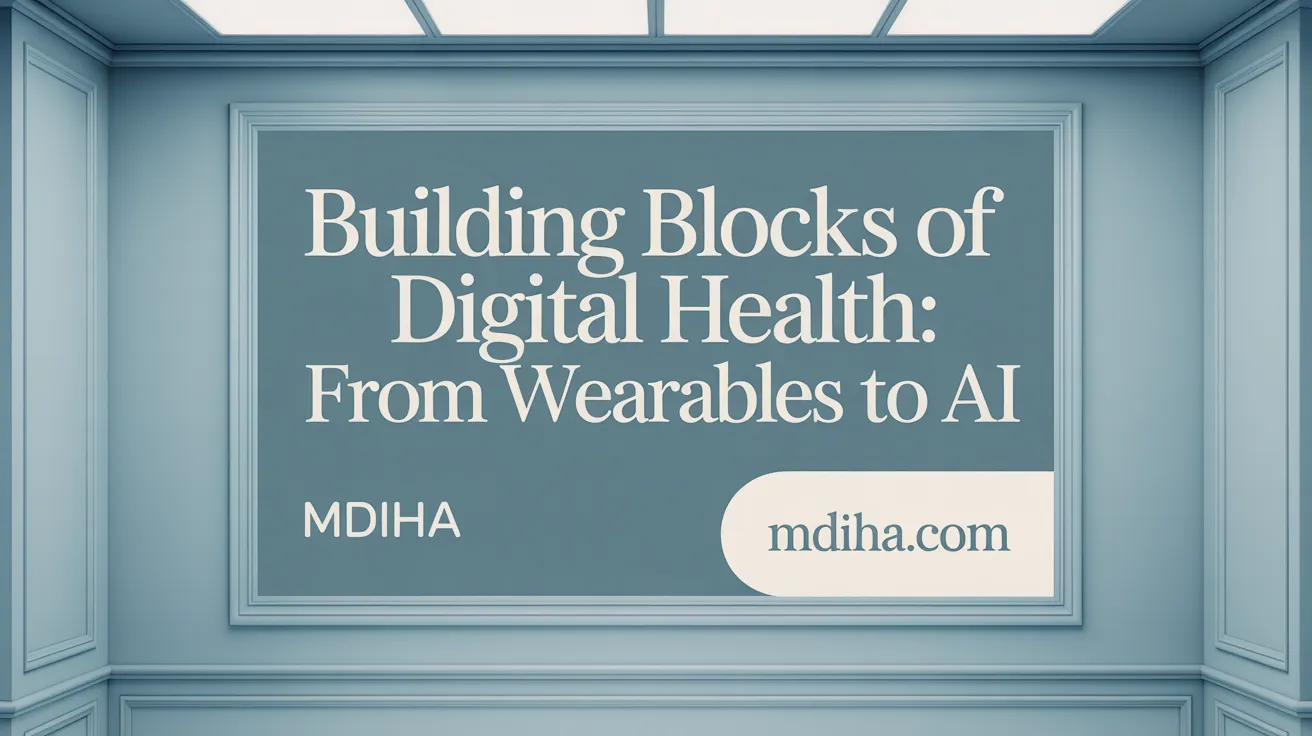
What are the key components of digital health technologies facilitating personalized preventive care?
Digital health technologies comprise a range of tools that synergize to enhance preventive healthcare. These tools include mobile health applications, wearable devices, telemedicine platforms, electronic health records (EHRs), and artificial intelligence (AI). Together, they enable continuous health monitoring, remote healthcare access, and smart data analysis.
Role of Wearables, Telemedicine, EHRs, and AI in Preventive Care
-
Wearable devices like smartwatches and biosensors track vital signs such as heart rate, blood oxygen levels, and ECG rhythms, facilitating early disease detection and real-time health feedback. See the Stanford Medicine and Apple Watch atrial fibrillation screening and Wearables for health monitoring.
-
Telemedicine expands healthcare accessibility by offering virtual consultations and remote monitoring, reducing barriers for patients with mobility limitations or those in remote locations. For insights on telemedicine benefits and remote healthcare access, see Telehealth technology overview.
-
Electronic Health Records (EHRs) provide comprehensive, sharable patient data including clinical history and test results that support personalized treatment and facilitate coordination among healthcare providers. Related info is available on PhRMA's Digital Health Hub and AI for analyzing EHR data.
-
Artificial Intelligence (AI) analyzes large datasets collected from various sources to predict health risks, support diagnostic accuracy, and generate personalized prevention strategies based on genetic, lifestyle, and environmental factors. Explore AI in healthcare risk prediction, AI-assisted medical imaging, and AI-driven preventive care.
Impact on Healthcare Access and Efficiency
These digital health components collectively improve healthcare by enabling proactive, preventive care rather than reactive treatment. These innovations increase access to medical expertise and monitoring, reduce the strain on healthcare systems by preventing hospitalizations, and enhance efficiency through streamlined data management and automated clinical decision supports. Consequently, patients benefit from timely, personalized care plans that promote better health outcomes and potentially lower healthcare costs. See discussions on AI enabling personalized proactive care and digital health impact on disease prevention.
Artificial Intelligence: Unlocking Proactive and Personalized Health Management
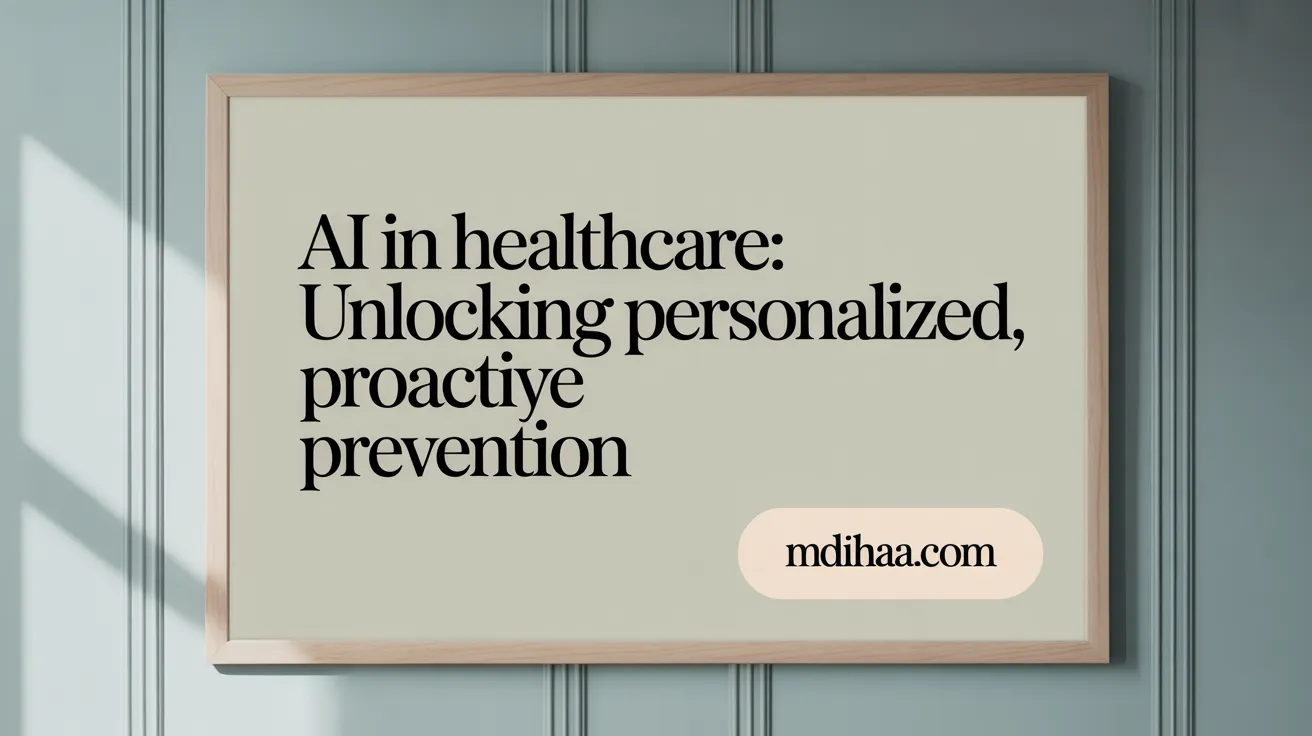
How does AI enhance early detection and personalized prevention?
Artificial intelligence (AI) significantly boosts early disease detection by analyzing vast amounts of data encompassing genetic profiles, clinical histories, environmental exposures, and lifestyle information. This comprehensive analysis allows AI systems to identify subtle health risk patterns well before symptoms manifest, outperforming traditional diagnostic methods. For more on how AI drives early detection and prevention, see AI in preventive medicine and AI for personalized, proactive, and smarter care.
AI applications in early detection and risk prediction
AI-driven predictive analytics utilize machine learning algorithms to forecast disease risks by recognizing trends in personal and population health data. These capabilities enable clinicians to pinpoint individuals at high risk for specific conditions such as cardiovascular diseases, diabetes, and certain cancers, facilitating timely preventive interventions. Relevant insights on predictive analytics and risk prediction models can be found in AI-driven preventive care and Precision Medicine and AI.
AI-driven diagnostic and monitoring tools
Tools powered by AI, like advanced imaging-assisted software, enhance diagnostic accuracy by interpreting medical images more precisely. Continuous health monitoring devices equipped with AI algorithms collect real-time biometric data (heart rate, respiratory function, blood glucose levels) through wearables. Such monitoring supports early detection of abnormalities, allowing prompt medical responses before progression. Learn more about AI-assisted diagnostic processes and Continuous health monitoring wearables.
AI’s integration with genomics and lifestyle data
AI integrates multi-omics genetic data with individual lifestyle factors to create personalized health risk profiles. This fusion supports tailored prevention strategies by factoring in gene-environment interactions, improving the effectiveness of behavioral interventions and lifestyle modifications. Virtual health assistants also leverage AI to provide customized health advice, medication reminders, and emotional support, further personalizing care. For further reading, see Advances in genetics and personalized prevention and Personalized Healthcare Technology.
By harnessing AI's capacity to merge complex datasets and deliver proactive insights, healthcare moves towards more personalized, timely, and efficient prevention and management strategies, ultimately improving patient outcomes and reducing healthcare burdens. For comprehensive overviews of AI's role in advancing personalized care, consult The doctor and patient of tomorrow and AI in Healthcare.
Genomics and Multi-Omics: Tailoring Prevention at the Molecular Level

What role do genetics and multi-omics technologies play in personalized preventive care?
Genetics and multi-omics technologies, such as genome sequencing and polygenic risk scoring, provide detailed insight into an individual's disease risk at the molecular level. These advances enable healthcare providers to stratify patients based on their genetic susceptibility and biological markers, allowing for more precise preventive measures. Advances in genetics and multi-omics
Through genetic testing, clinicians can identify mutations linked to diseases like breast cancer, cardiovascular diseases, and obesity. Polygenic risk scores (PRS) integrate multiple genetic variants to estimate overall disease risk, making it possible to tailor screening programs and lifestyle advice accordingly. Personalized prevention strategies
How do gene-environment interactions influence disease risk?
Disease risk is not determined by genetics alone but also by interactions with environmental and lifestyle factors. For instance, a person’s genetic predisposition to cardiometabolic diseases can be mitigated or amplified by diet, physical activity, and other behavioral factors. Gene-environment interactions
Understanding these interactions supports the design of personalized lifestyle interventions that take both inherent genetic risks and modifiable environmental exposures into account. This integrative approach enhances the effectiveness of preventive strategies. Efficiency of personalized prevention
What are the advantages and challenges of genomic-based personalized prevention?
Advantages of using genomics in prevention include:
- Improved accuracy in risk identification allowing earlier and targeted interventions. Personalized prevention strategies and benefits
- Enhanced efficiency by focusing resources on high-risk individuals, reducing unnecessary treatments.
- Ability to motivate behavior change via personalized lifestyle recommendations.
However, challenges persist:
- Managing large-scale genetic data requires robust infrastructure and privacy safeguards. Ethical considerations and data management
- Ethical concerns such as genetic discrimination and informed consent must be addressed.
- Health disparities may be exacerbated if access to genomic technologies is unequal.
- Healthcare providers need specialized training to interpret genomic information and incorporate it into patient care. Healthcare provider education for genomics
Continued advancements in technology, policy development, and education are vital to safely harness the potential of genomics in preventive health care. Future of personalized prevention
Wearables and Continuous Monitoring: Empowering Real-Time Preventive Care

How do wearable devices contribute to personalized preventive healthcare?
Wearable devices like smartwatches and fitness trackers play a crucial role in personalized preventive healthcare by continuously monitoring key health parameters. These devices track vital signs such as heart rate, ECG rhythms, sleep quality, and glucose levels, delivering real-time data that allows for early detection of potential health issues (Digital health technologies in preventive care, Wearables and health monitoring devices).
Functionality and benefits of wearable devices
- Continuous Tracking: Wearables collect ongoing physiological data, helping identify subtle changes before symptoms arise (Continuous health monitoring with smartwatches).
- Early Warning: Devices alert users and clinicians to irregularities, such as abnormal heart rhythms, enabling timely medical evaluation (Apple Watch atrial fibrillation screening).
- Personalized Insights: Data collected feeds into AI algorithms that offer customized health recommendations and risk assessments (AI in healthcare diagnostics, AI-driven preventive care).
- Improved Disease Management: For chronic illnesses like diabetes and cardiovascular diseases, wearables facilitate better monitoring and adherence to treatment plans (Chronic disease management with AI, Digital therapeutics for chronic diseases).
Examples like Apple Watch in large studies
A landmark example is the Apple Heart Study conducted by Stanford Medicine and Apple, which enrolled over 400,000 participants. The study utilized the Apple Watch to screen for atrial fibrillation, a condition responsible for many strokes and hospitalizations. This massive digital initiative proved wearable technology could effectively detect irregular heart rhythms, leading to earlier intervention and enhanced care (Stanford Medicine and Apple digital health study, Large-scale heart rhythm study.
Impact on chronic disease management
Wearables improve chronic disease outcomes by providing continuous feedback and encouraging proactive health behaviors. For example, continuous glucose monitors aid diabetics in managing blood sugar effectively, while cardiac rhythm monitors help prevent complications in heart patients. This integration of wearables into healthcare systems supports constant monitoring outside clinical settings, reducing hospital visits and empowering patients in self-care (Preventive Healthcare Technology, Digital health technologies).
Overall, wearable technologies and continuous monitoring represent a transformative advance in preventive health, enabling personalized, proactive care that can save lives and reduce healthcare costs (AI will enable personalized, proactive, smarter care).
Telemedicine and Digital Platforms: Expanding Access to Personalized Prevention
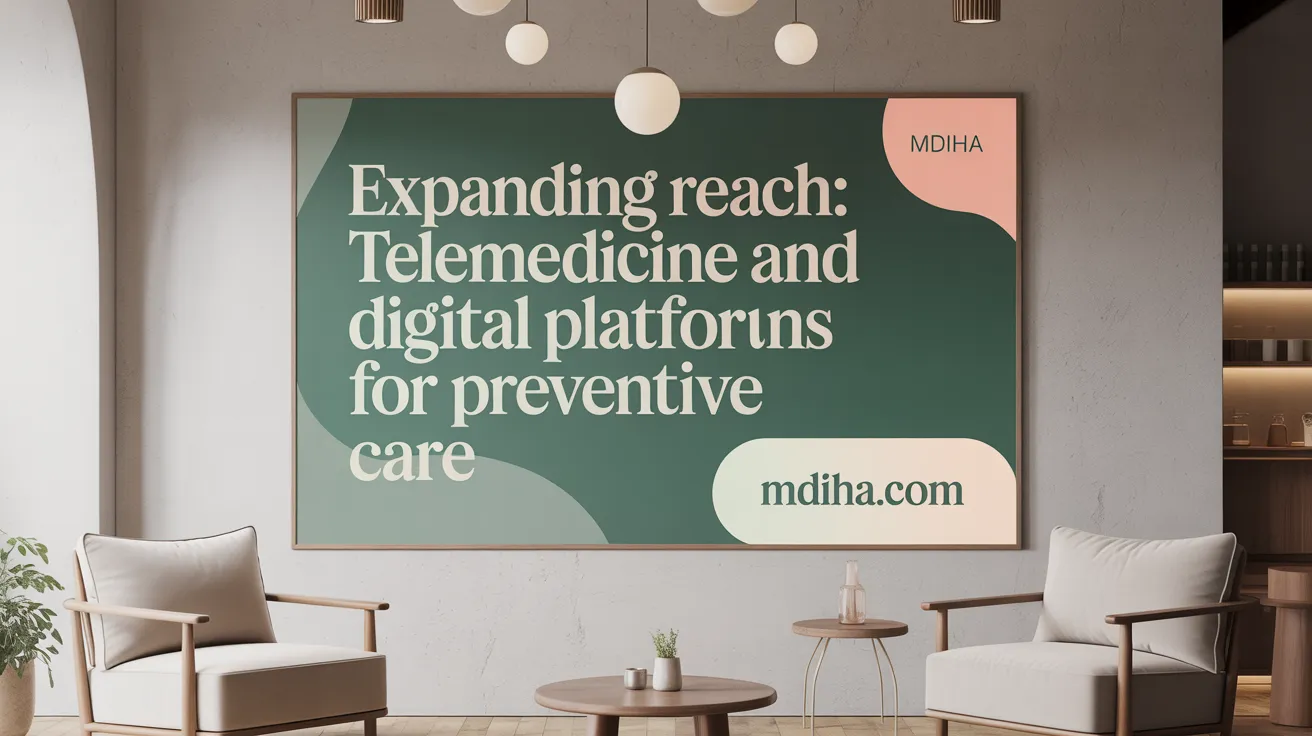
In what ways do telemedicine and digital health platforms facilitate personalized preventive care?
Telemedicine plays a crucial role in delivering personalized preventive care by enabling remote healthcare consultations. This is particularly beneficial for individuals facing challenges such as limited mobility, residing in remote areas, or having difficulty accessing traditional in-person healthcare services. Through telehealth, patients can consult with healthcare providers without the need to travel, improving convenience and continuity of care.
Digital health platforms complement this by offering tailored educational resources and interactive tools aimed at empowering patients. Mobile health applications and messaging services provide personalized health advice, reminders for medication adherence, and behavior modification support, such as managing diet, physical activity, and chronic conditions like diabetes or cardiovascular disease.
These technologies collectively reduce barriers to accessing preventive care by overcoming distance, transportation issues, and scheduling conflicts. They encourage patient engagement by facilitating ongoing monitoring and support, enabling earlier interventions and more effective management of health risks.
By integrating telemedicine with digital education tools, healthcare systems promote a proactive, participatory approach to health that aligns with personalized prevention goals — targeting individual risk factors with customized guidance and continuous care outside traditional clinical environments.
Challenges and Ethical Considerations in Technology-Driven Preventive Care
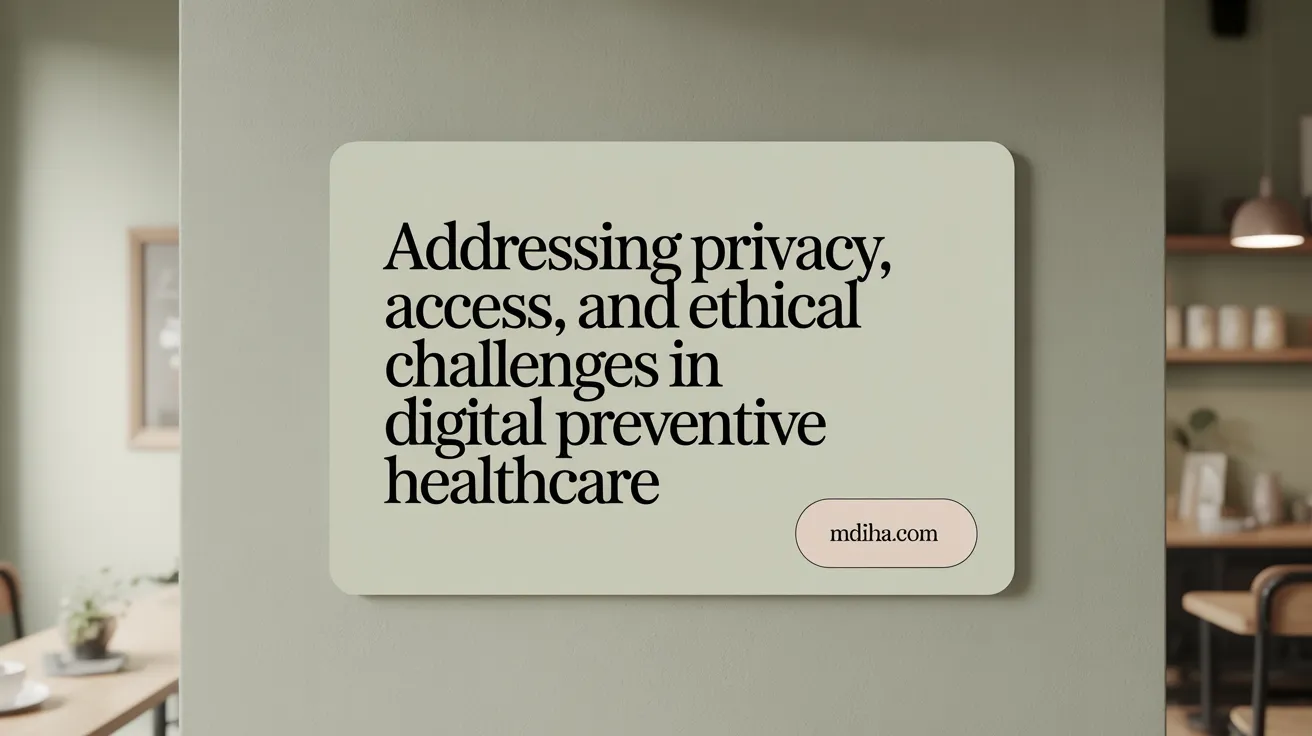
What are the main challenges and ethical considerations faced by technology-enabled personalized preventive care?
Technology-driven preventive care is transforming healthcare but faces significant challenges and ethical issues.
Data Privacy and Security: The vast amounts of health data collected through digital health tools and AI require stringent privacy protections. Ensuring data security, compliance with regulations like HIPAA and GDPR, and safeguarding against breaches are crucial to maintain patient trust.
Health Equity and Access Disparities: Access to digital preventive healthcare is uneven. Socioeconomic status, geographic location, age, and digital literacy affect patients' ability to benefit from these technologies. Without targeted efforts, these disparities may widen health inequities, as discussed in the analysis of digital health access challenges.
Bias in AI Algorithms and Ethical Governance: AI systems can perpetuate biases present in training data, leading to unfair treatment or inaccurate risk predictions for certain populations. Transparent, inclusive, and responsible AI governance—including diverse datasets, bias audits, and regulatory oversight—is vital to achieve equitable care. Frameworks and principles for ethical AI in healthcare, such as those promoted by the WHO Principles for AI Governance, emphasize transparency, responsibility, and sustainability.
Healthcare providers must be educated on ethical AI use and remain vigilant in monitoring AI tools. Incorporating ethical considerations and bias mitigation strategies into clinical practice is essential.
Together, these challenges highlight the need for robust governance, technological safeguards, and inclusive policies to ensure that technology-driven preventive care is both effective and ethically sound.
Looking Ahead: Future Trends in Personalized Preventive Care Technologies
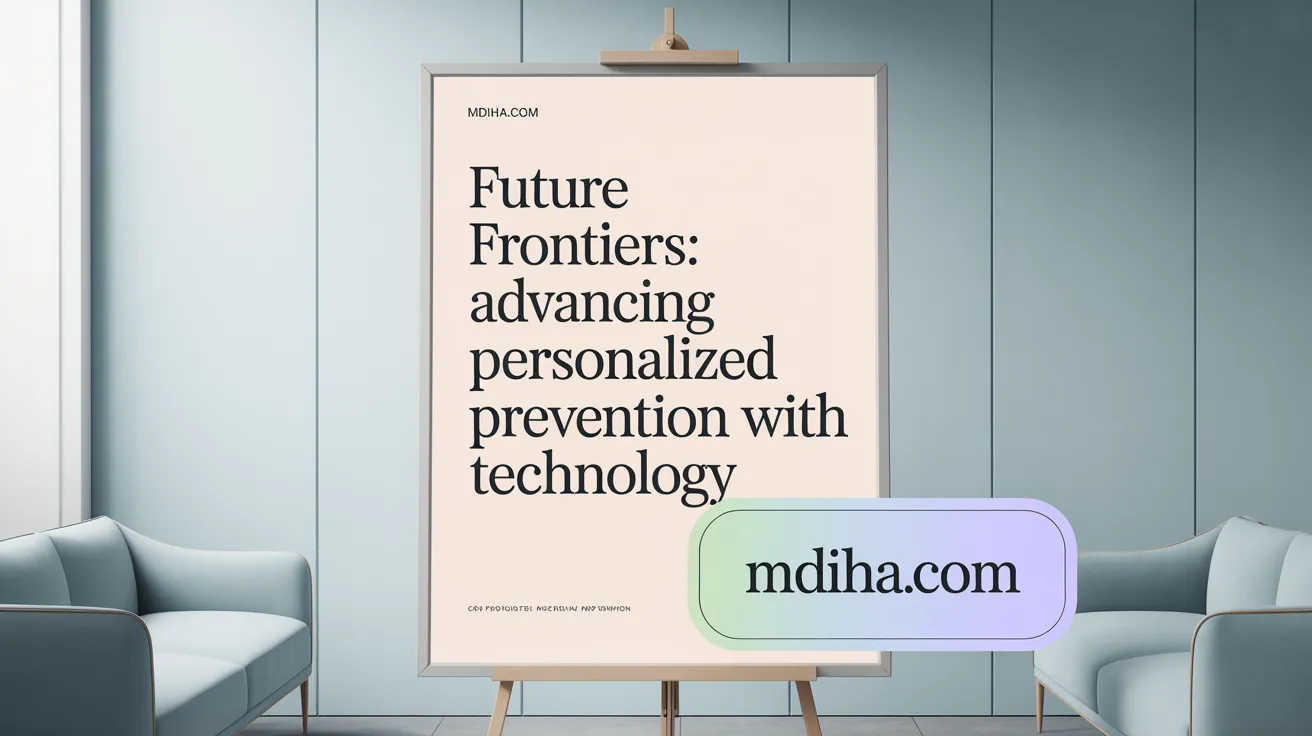
What future advancements are expected to further personalize and enhance preventive care?
Advances in artificial intelligence in healthcare and genomics are revolutionizing preventive care by enabling more precise risk assessment and early disease detection. AI-powered tools now integrate complex data from genomic profiles, clinical information, lifestyle, and environmental factors, allowing for tailored medication and interventions unique to each patient.
How is AI integrating with wearable biosensors and telehealth to support preventive care?
Wearable devices equipped with biosensors continuously monitor vital signs such as heart rate, blood oxygen levels, and glucose, transmitting real-time data for immediate analysis via AI algorithms in healthcare. These systems not only detect early signs of irregularities, like arrhythmias, but also connect patients with providers through telehealth platforms for timely consultations, fostering proactive management beyond traditional clinic visits.
What emerging digital therapeutics and tools empower patients in their preventive health journey?
Digital therapeutics, including AI-driven behavior modification apps and virtual health assistants, offer personalized coaching, medication reminders, and mental health support. These technologies empower patients to actively manage their health, increase treatment adherence, and engage in lifestyle changes. Additionally, technologies such as VR-enabled rehabilitation programs provide immersive environments for personalized preventive care and recovery.
| Trend | Description | Impact on Preventive Care |
|---|---|---|
| AI & Genomics Integration | Combines genetic data with AI for early diagnosis and personalized therapy | Enables precision medicine and earlier intervention |
| Wearables & Telehealth | Continuous biosensing coupled with remote clinical access | Supports real-time monitoring and timely care delivery |
| Digital Therapeutics & Virtual Assistants | Personalized coaching, reminders, and behavioral support via AI | Enhances patient engagement and improves health outcomes |
| Immersive Technologies | VR and gamified exercises for preventive and rehabilitative care | Promotes adherence and personalized treatment |
These innovations collectively form a more personalized, participatory, and proactive preventive healthcare model that promises better outcomes and greater accessibility.
Embracing a Digital Future for Personalized Preventive Health
Technology is fundamentally transforming preventive healthcare by enabling tailored interventions based on individual risk profiles, real-time monitoring, and data-driven insights. The convergence of AI, genomics, wearables, and telemedicine fosters earlier disease detection, better chronic disease management, and empowered patient participation. Overcoming challenges related to privacy, equity, and ethical AI use will be critical. As these technologies evolve, personalized preventive care promises to improve health outcomes, reduce costs, and redefine the patient-doctor relationship through compassionate, data-enhanced care.
